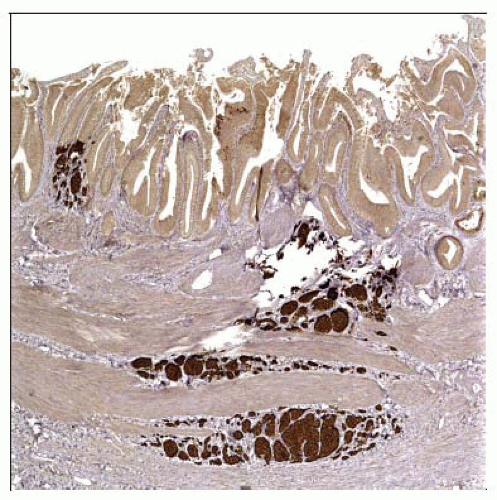Carcinoid Tumor
Kari D. Caradine, MD
Key Facts
Clinical Issues
Rare primary neoplasm of biliary tract
All tumors have metastatic potential
Risk is mostly dependent on location in GI tract, size, and depth of invasion
Microscopic Pathology
Uniform cells in insular, trabecular, and nesting patterns of growth within fibrous stroma
Round, uniform nuclei with finely stippled chromatin (“salt and pepper”)
Scant mitoses, ≤ 2 mitotic figures per 10 HPF
Minimal or no necrosis
Diffuse reactivity with neuroendocrine markers (chromogranin, synaptophysin, and neuron-specific enolase)
 Synaptophysin immunostain highlights a carcinoid tumor of the gallbladder. Note that several foci extend from the mucosa into the wall. |
TERMINOLOGY
Synonyms
Well-differentiated neuroendocrine tumor
Definitions
Neoplasm of diffuse endocrine cell system
CLINICAL ISSUES
Epidemiology
Incidence
Rare primary neoplasm of biliary tract
Most common location in biliary tract is gallbladder
Age
Mean age at presentation is 60 years
Gender
Slightly more common in females
Presentation
May have symptoms of biliary obstruction, particularly those arising in extrahepatic bile ducts
Stay updated, free articles. Join our Telegram channel

Full access? Get Clinical Tree




